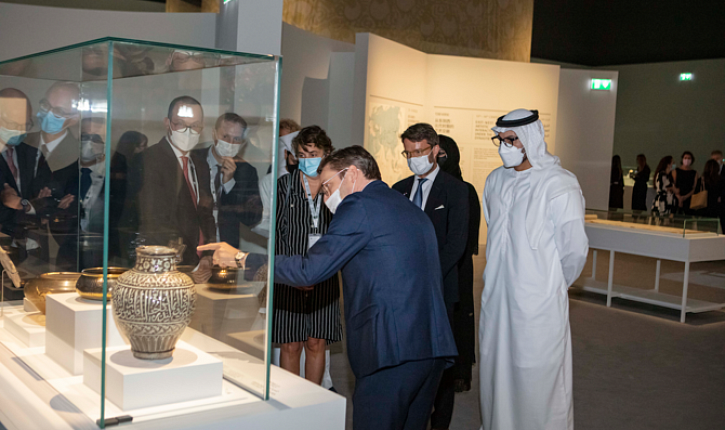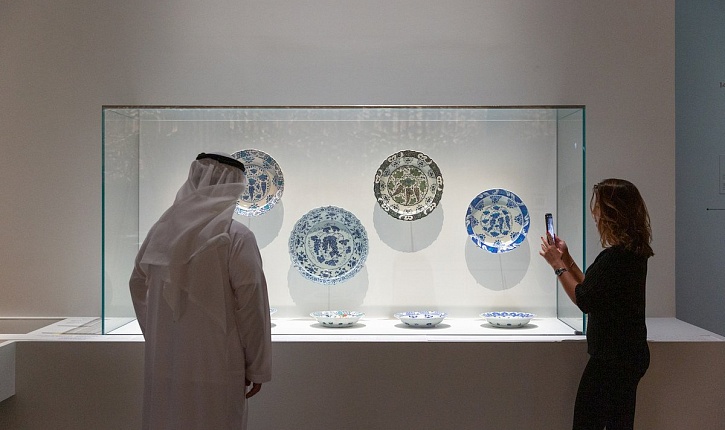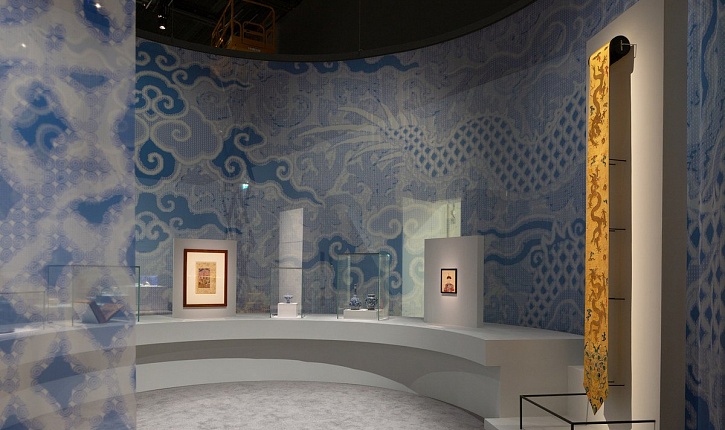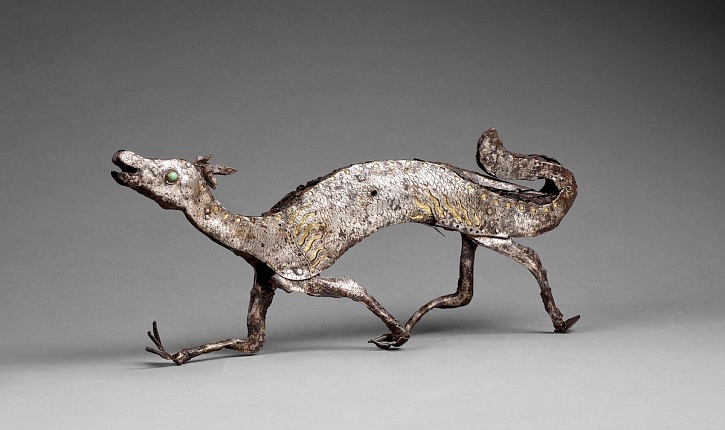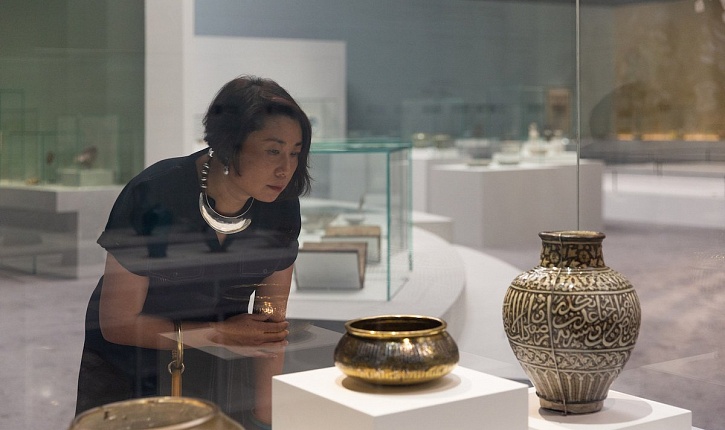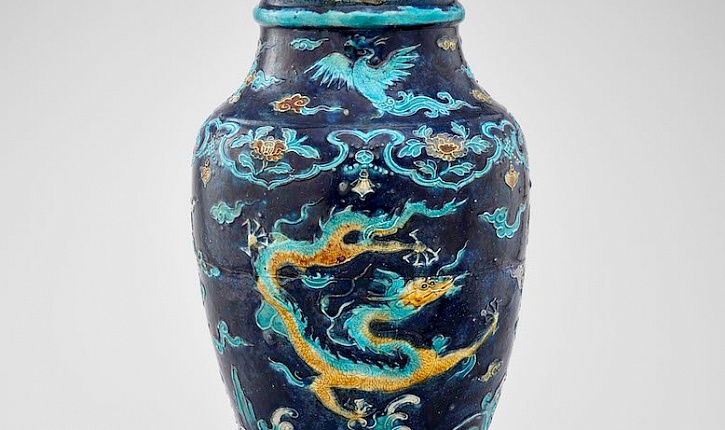Louvre Abu Dhabi demonstrates historical cultural ties between China and the Islamic world
Over the past decade, the world has seen China expand its economic presence in the Persian Gulf region, becoming the largest trading partner and external investor for many countries in the Middle East.
However, many forget that China's relations with the Arab world go back to ancient times — during the Great Silk Road and the origin of Islam on the Arabian Peninsula.
Thanks to Arab explorers, such as the traveler Ibn Battuta, and the expansion of trade activities in Europe, business and cultural exchange prospered between China and the Arab world.
What many analysts call the "new Silk Road of China” is, in fact, a return to the common past, which is being explored at the exhibition "Dragon and Phoenix: Centuries of Exchange between the Chinese and Islamic Worlds”, which will be on display at the Louvre Abu Dhabi until February 12, 2022.
The exhibition includes more than 200 masterpieces from the Louvre Abu Dhabi in partnership with the Guimet Museum in Paris and demonstrates the cultural and artistic exchange between the two civilizations for more than 800 years up to the 18th century.
The exhibition pays homage to the Dragon representing China and the Phoenix belonging to the Islamic world, with artifacts dating back to the creation of the first Arab trading colonies in the trading city of Canton in the 8th century.
The objects tell about the travels of traders and explorers from the Arab world through Central Asia and across the Indian Ocean to China and Southeast Asia.
Among the masterpieces on display is a rare Yuan Dynasty gold cup in the Louvre Abu Dhabi (1279-1368) with a dragon-shaped handle from China, which may have been made for a nomadic dignitary.
Another highlight is the Tatarichi Panni (or Tatar fabrics) - silk fabric with gold threads - from the Guimet collection.
The calligraphy section presents paintings and calligraphy by Wen Zhengming (1470-1559), Dong Qichang (1555-1636) and Zhud Shi biao (1615-1698), provided by the Guimet Museum. These works emphasize the sophistication of Arabic script letters in a selection of illustrated manuscripts of the Koran.
The exhibition also features paintings, silverware, ceramics, glassware, manuscripts and luxury fabrics.
The exhibition will be accompanied by a cultural program, including weekend screenings of family films.
Source of information:
arabnews.com
However, many forget that China's relations with the Arab world go back to ancient times — during the Great Silk Road and the origin of Islam on the Arabian Peninsula.
Thanks to Arab explorers, such as the traveler Ibn Battuta, and the expansion of trade activities in Europe, business and cultural exchange prospered between China and the Arab world.
What many analysts call the "new Silk Road of China” is, in fact, a return to the common past, which is being explored at the exhibition "Dragon and Phoenix: Centuries of Exchange between the Chinese and Islamic Worlds”, which will be on display at the Louvre Abu Dhabi until February 12, 2022.
The exhibition includes more than 200 masterpieces from the Louvre Abu Dhabi in partnership with the Guimet Museum in Paris and demonstrates the cultural and artistic exchange between the two civilizations for more than 800 years up to the 18th century.
The exhibition pays homage to the Dragon representing China and the Phoenix belonging to the Islamic world, with artifacts dating back to the creation of the first Arab trading colonies in the trading city of Canton in the 8th century.
The objects tell about the travels of traders and explorers from the Arab world through Central Asia and across the Indian Ocean to China and Southeast Asia.
Among the masterpieces on display is a rare Yuan Dynasty gold cup in the Louvre Abu Dhabi (1279-1368) with a dragon-shaped handle from China, which may have been made for a nomadic dignitary.
Another highlight is the Tatarichi Panni (or Tatar fabrics) - silk fabric with gold threads - from the Guimet collection.
The calligraphy section presents paintings and calligraphy by Wen Zhengming (1470-1559), Dong Qichang (1555-1636) and Zhud Shi biao (1615-1698), provided by the Guimet Museum. These works emphasize the sophistication of Arabic script letters in a selection of illustrated manuscripts of the Koran.
The exhibition also features paintings, silverware, ceramics, glassware, manuscripts and luxury fabrics.
The exhibition will be accompanied by a cultural program, including weekend screenings of family films.
Source of information:
arabnews.com
